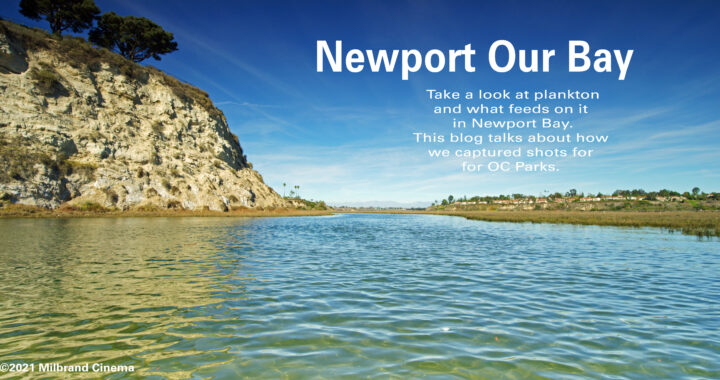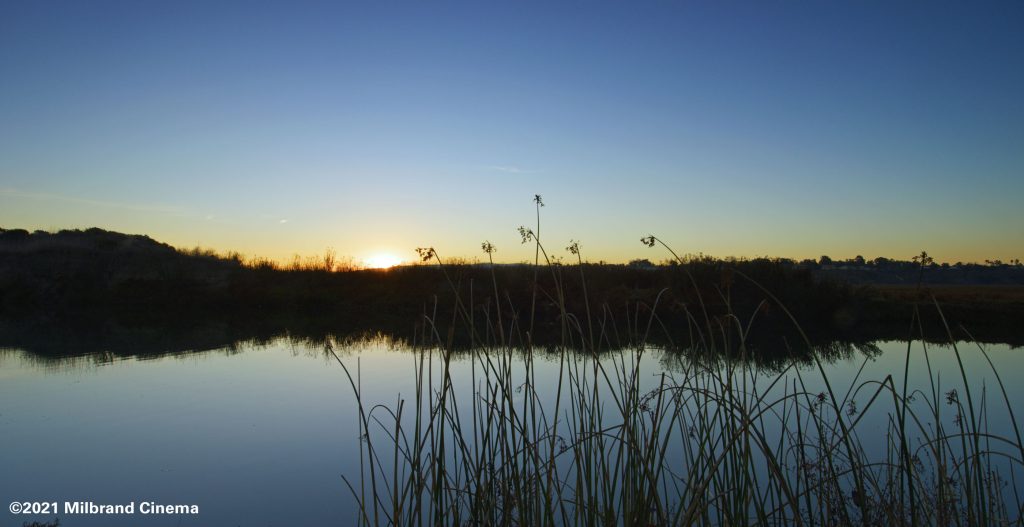Water within Newport’s Upper Back Bay looks innocent enough but like any wetland, it contains a soupy mixture of billions of tiny, microscopic creatures, larvae, and plants. Our objective in capturing plankton was to show creatures that live in the bay feeding upon this unusual life form.
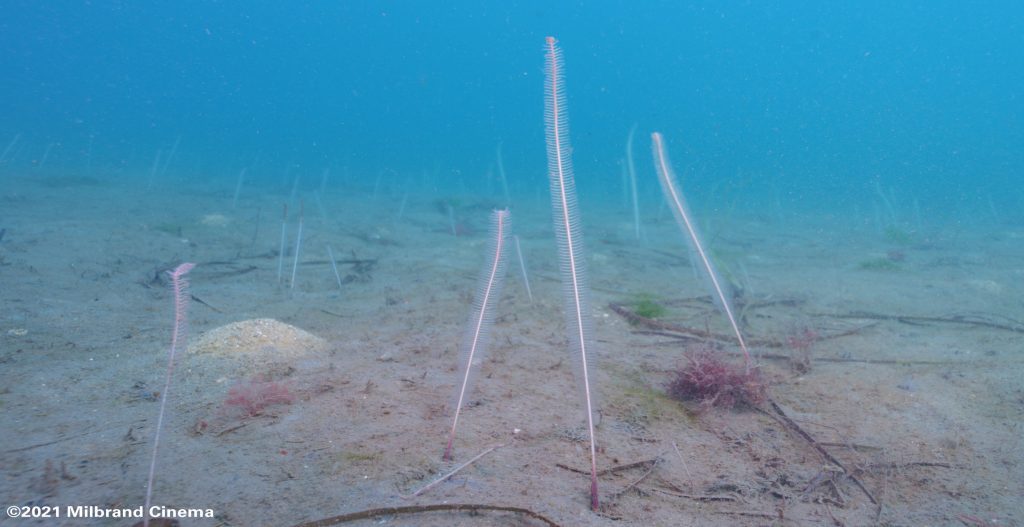 Sea Pens anchor to the seafloor and feed by casting their vertical net, twisting their soft bodies into the current. We found these creatures closer to the mouth of the bay capturing microscopic prey.
Sea Pens anchor to the seafloor and feed by casting their vertical net, twisting their soft bodies into the current. We found these creatures closer to the mouth of the bay capturing microscopic prey. 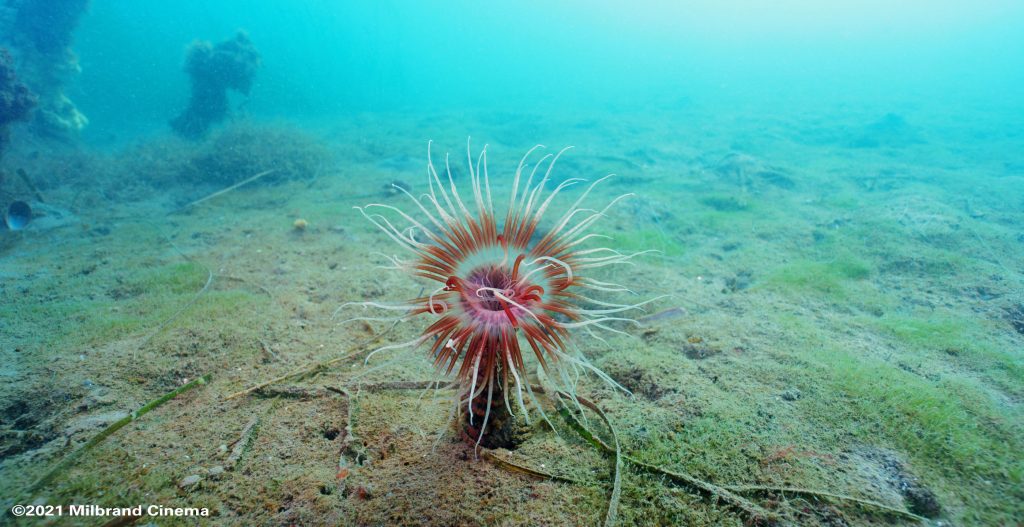 I’ve never witnessed an anemone feeding on plankton. These stringy appendages are venom tipped tentacles and the center hole of this animal is its mouth. The anemone grabbed the drifting plankton and placed the food directly into its mouth, non-stop for over 30-minutes. This shot makes for a wonderful sequence but the food it was eating is so tiny, we needed help. Our eyes are not powerful enough to see its prey but with the expertise of a friend who works at the Marine Science Lab on Shellmaker Island, we were able to capture what it eats.
I’ve never witnessed an anemone feeding on plankton. These stringy appendages are venom tipped tentacles and the center hole of this animal is its mouth. The anemone grabbed the drifting plankton and placed the food directly into its mouth, non-stop for over 30-minutes. This shot makes for a wonderful sequence but the food it was eating is so tiny, we needed help. Our eyes are not powerful enough to see its prey but with the expertise of a friend who works at the Marine Science Lab on Shellmaker Island, we were able to capture what it eats. 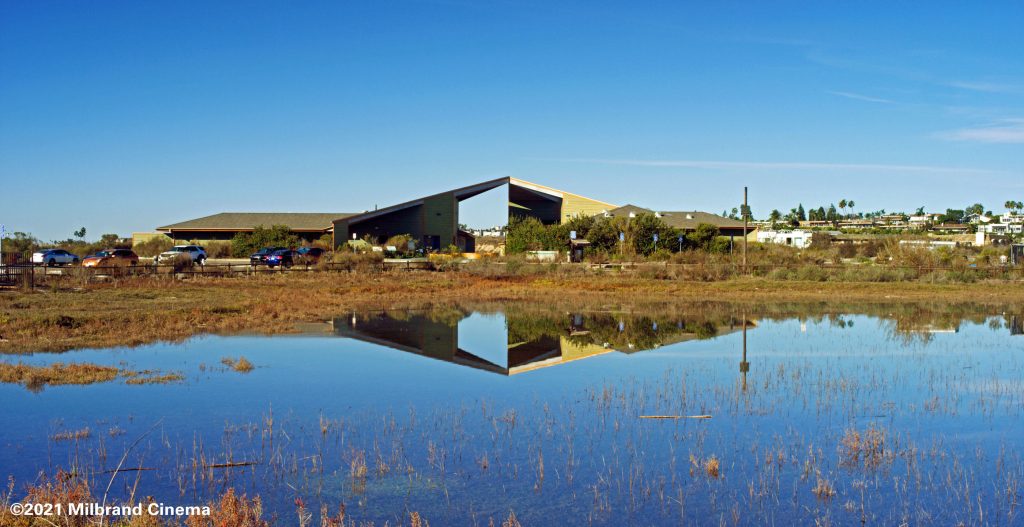 This building is known as the Back Bay Science Center, home to the California Department of Fish and Wildlife (CDFW). The CDFW looks after the Upper Newport Bay Ecological Reserve, a Marine Protected Area. Twice daily, high tides cover the marshland, this shot was captured during a winter King Tide.
This building is known as the Back Bay Science Center, home to the California Department of Fish and Wildlife (CDFW). The CDFW looks after the Upper Newport Bay Ecological Reserve, a Marine Protected Area. Twice daily, high tides cover the marshland, this shot was captured during a winter King Tide. 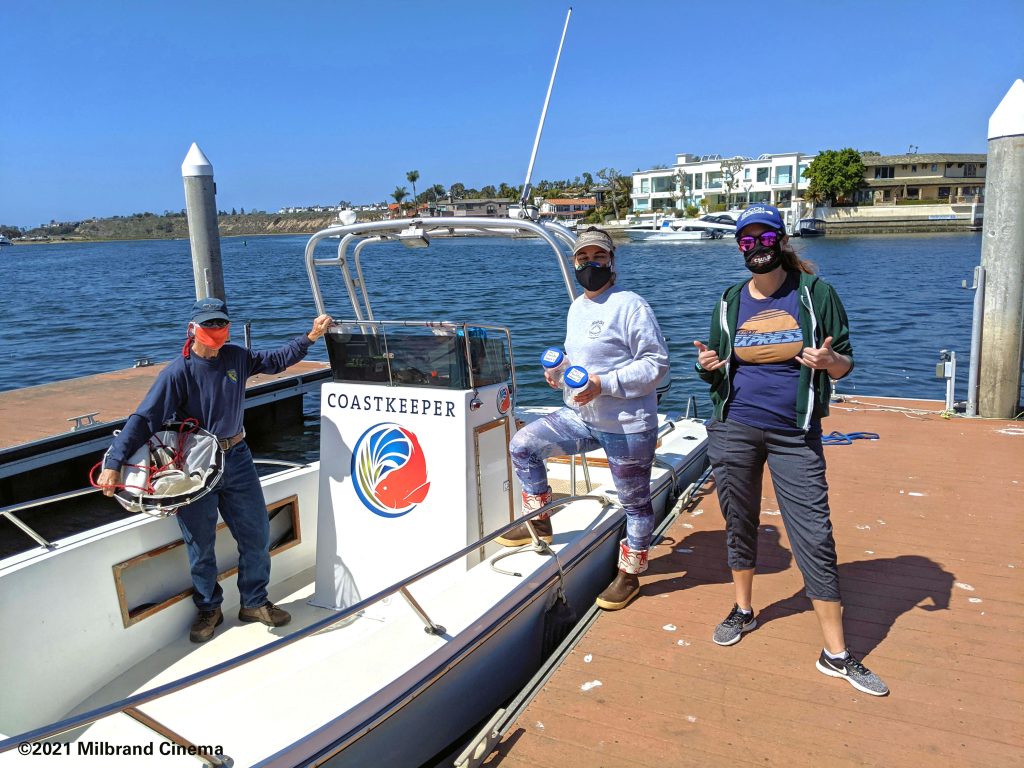 The films plankton collectors, Dave Meyer from CDFW, Carissa Macias from Newport Bay Conservancy and Katie Nichols from OC Coastkeepers. The three collected a jarful of plankton within the Upper Back Bay in less than a half-hour.
The films plankton collectors, Dave Meyer from CDFW, Carissa Macias from Newport Bay Conservancy and Katie Nichols from OC Coastkeepers. The three collected a jarful of plankton within the Upper Back Bay in less than a half-hour. 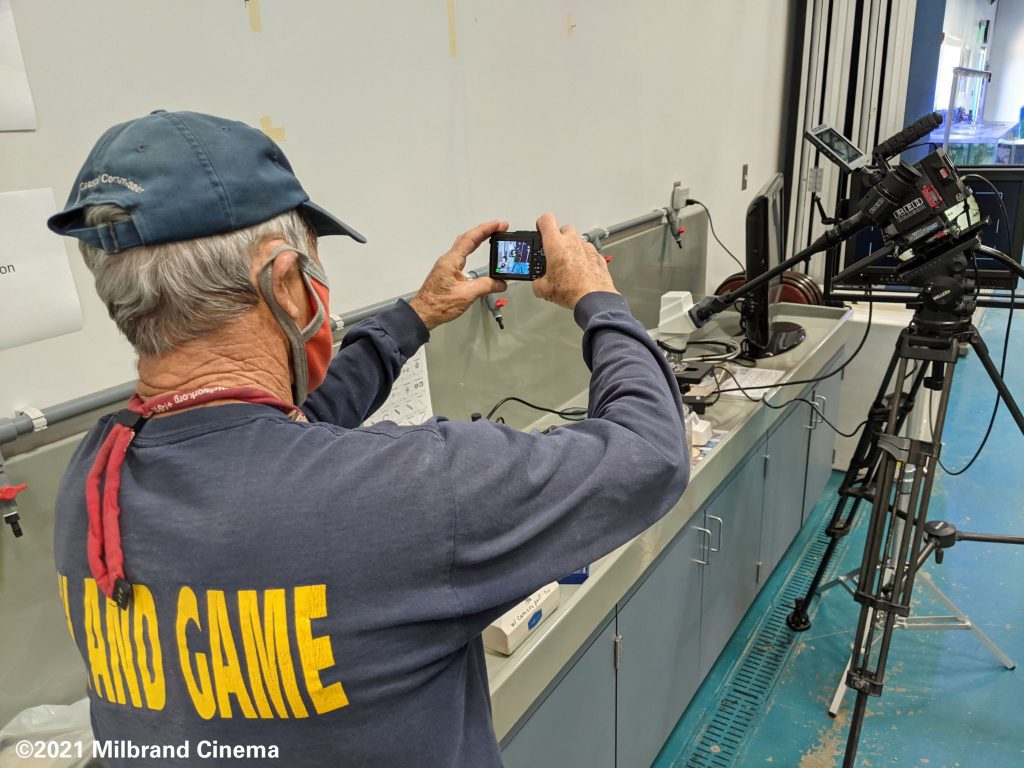 Dave Meyer is an expert in collecting plankton and assessing marine life in Upper Newport Back Bay. Dave’s set up our slides and made sure we used their brightest microscope. The Back Bay Science Center is a resource for students who are interested in marine biology.
Dave Meyer is an expert in collecting plankton and assessing marine life in Upper Newport Back Bay. Dave’s set up our slides and made sure we used their brightest microscope. The Back Bay Science Center is a resource for students who are interested in marine biology. 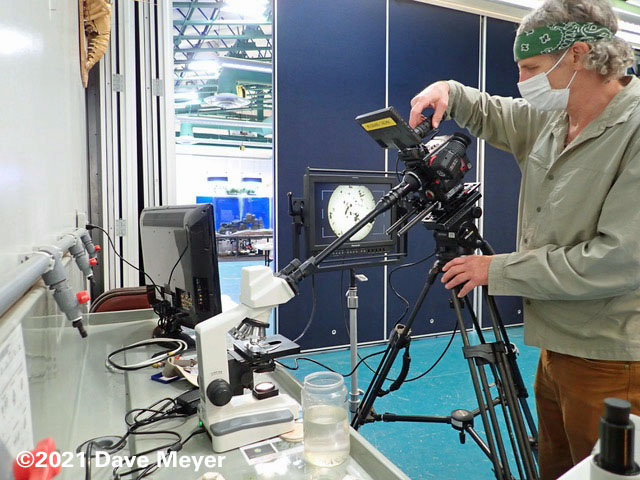 Lance Milbrand used a special lens to peer into the microscope and reveal a food source for marine creatures that is seldom seen by humans. Plankton
Lance Milbrand used a special lens to peer into the microscope and reveal a food source for marine creatures that is seldom seen by humans. Plankton 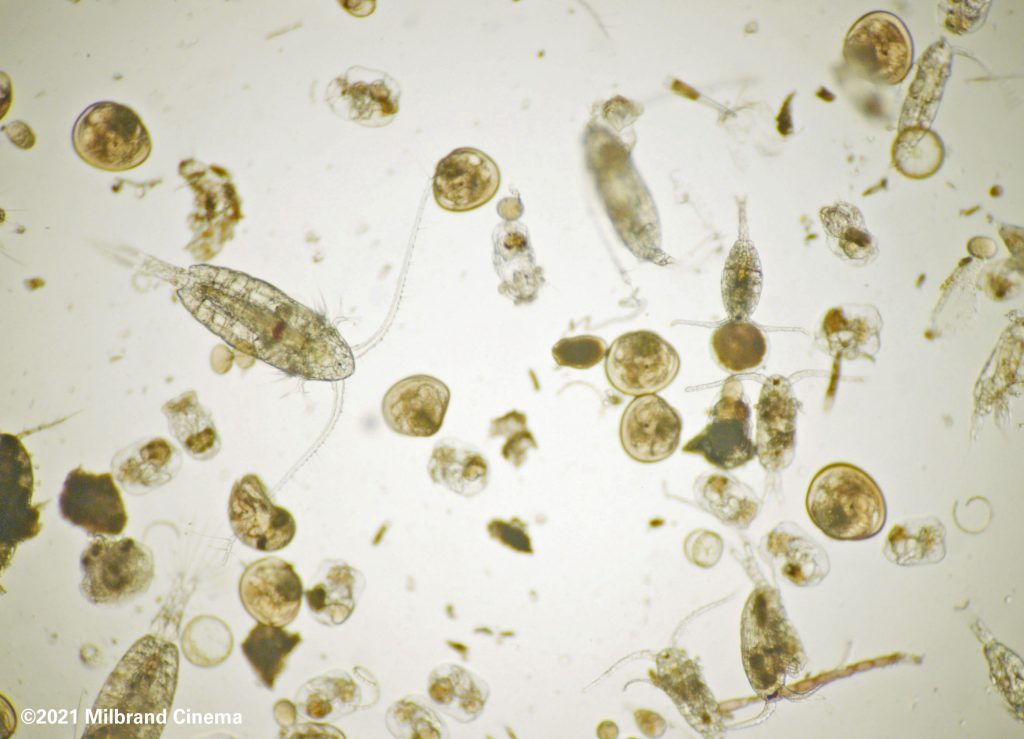 This plankton and phytoplankton (marine plants) is a concentrated sample of copepods, larval forms of clams and other species, collected by towing a special net behind a slow-moving boat. Many creatures take advantage of this food source, from birds to shore crabs and especially sea anemone.
This plankton and phytoplankton (marine plants) is a concentrated sample of copepods, larval forms of clams and other species, collected by towing a special net behind a slow-moving boat. Many creatures take advantage of this food source, from birds to shore crabs and especially sea anemone. 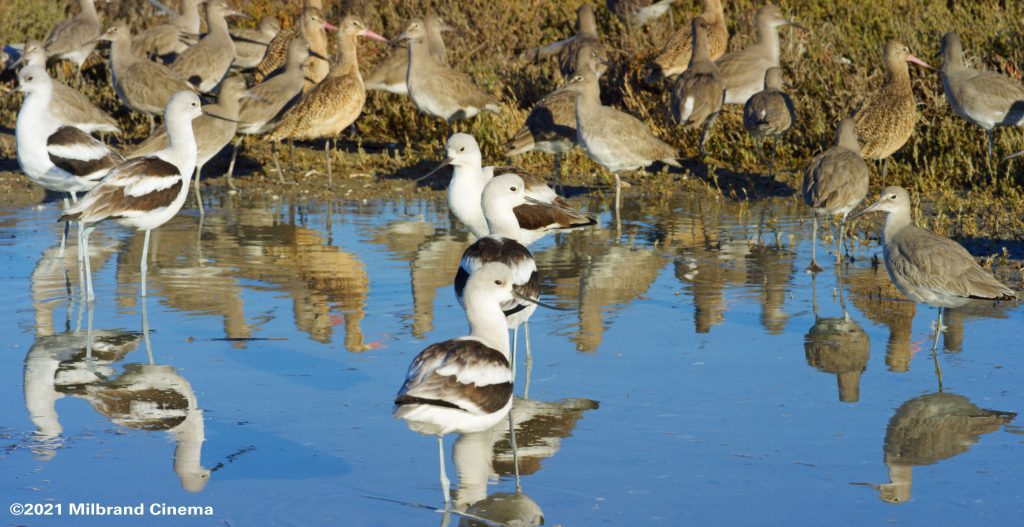 American avocets in the foreground visit the Back Bay during fall and winter to rest, feed and mate. Using their specially adapted curved beaks, they walk along the shoreline, hunting for phytoplankton by dipping their beaks along the surface and whipping their heads from side to side.
American avocets in the foreground visit the Back Bay during fall and winter to rest, feed and mate. Using their specially adapted curved beaks, they walk along the shoreline, hunting for phytoplankton by dipping their beaks along the surface and whipping their heads from side to side.
The next time you look across the horizon and see a body of water, think about the billions of tiny creatures that we can barely see, drifting with the tides and the wind, plankton, and all the creatures that plankton feeds.

